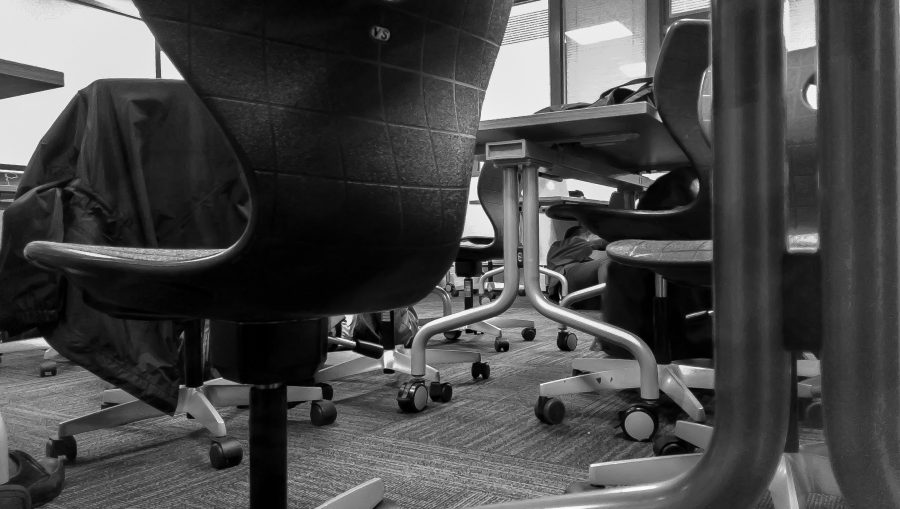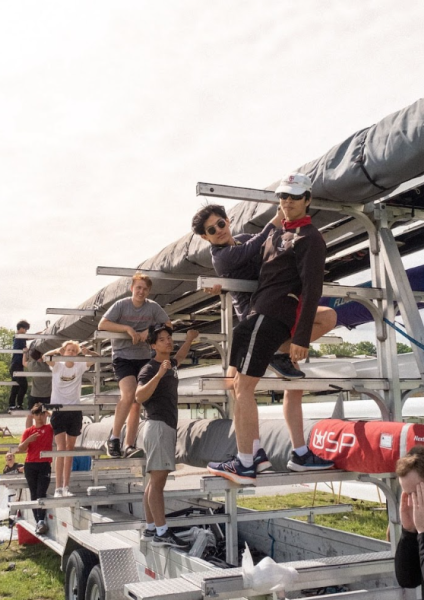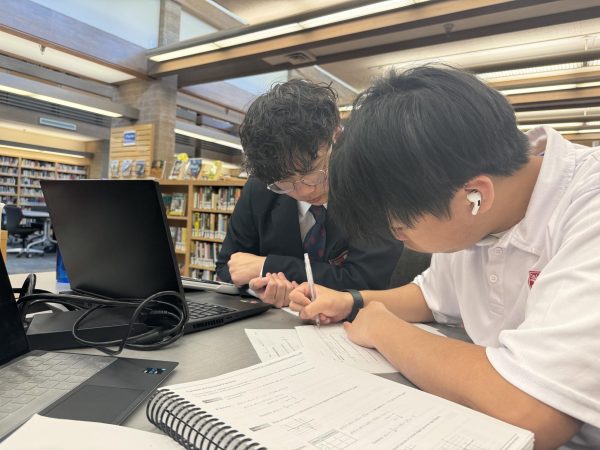Saints Drops, Covers and Holds On for B.C. ShakeOut Day
Drop! Cover! Hold on! St. George’s participates in the B.C. Shakeout Drill
Thursday, October 20th, 2016 marked the sixth annual Great British Columbia ShakeOut, a province-wide awareness drill aimed at educating the public about how to stay safe and prepare for an earthquake. When the hypothetical earthquake struck at 10:20 a.m., the St. George’s community and 800,000 other British Columbians dropped, covered, and held on to anything that would protect them in the event of a real disaster. Once the “shaking” had stopped, participants started counting down from 60 – an important safety procedure that could potentially save lives in the event of aftershocks. Although it may seem futile to some, drills are crucial; a lack of preparation combined with a panicked state of mind could be fatal in a real earthquake.
 In an interview with Mr. W. MacKay, Head of Science (and Geology, Biology and Science teacher) at the school, clarified the purpose of B.C. Shakeout Day as “[ultimately,] preparation for an emergency. For an emergency that varies in its levels of possible severity. Since we haven’t had a major earthquake that has had fatalities, we have no idea what to do, what not to do, and where to go … there’s a lot of emergency preparedness that we’re just not ready for.” He also praised the school, for not only being a “well-designed structure to prevent fatalities”, but also for its conduction of drills, which added “another level of safety that is very good practice to have”. “Drills are a very good idea”, he concluded.
In an interview with Mr. W. MacKay, Head of Science (and Geology, Biology and Science teacher) at the school, clarified the purpose of B.C. Shakeout Day as “[ultimately,] preparation for an emergency. For an emergency that varies in its levels of possible severity. Since we haven’t had a major earthquake that has had fatalities, we have no idea what to do, what not to do, and where to go … there’s a lot of emergency preparedness that we’re just not ready for.” He also praised the school, for not only being a “well-designed structure to prevent fatalities”, but also for its conduction of drills, which added “another level of safety that is very good practice to have”. “Drills are a very good idea”, he concluded.
Would Vancouver be ready if the earthquake struck tomorrow? In short, it wouldn’t be. Although MacKay mentioned that Vancouverites would be “better than unprepared”, he warned we haven’t “been through enough earthquakes to really condition ourselves to a predictable response. There just has not been enough of them.”

Map displaying the San Andreas and Cascadia faults.
Vancouver is located close to two major fault lines, the San Andreas fault and the Cascadia subduction zone (which hasn’t seen major activity since 1700). Although San Andreas is more discussed and even has a movie made about its destruction, the Cascadia subduction zone is capable of producing a 9.0 magnitude earthquake … and a tsunami. The fault extends 700 miles along the ocean floor from Cape Mendocino in California to the west of Vancouver Island. Mackay explains:
“The fact that it’s underwater is probably the biggest concern, because when it does ultimately fail (and it will fail), sea level will drop. When sea level drops, then you get the formation of a tsunami. So it’s the tsunami that could devastate a lot of coastal communities up and down the Canadian and the American coast.”
So, what are the consequences of a magnitude 9.0 earthquake striking the West Coast? According to MacKay, “buildings will collapse, gas mains will fracture and possibly cause many fires to erupt. Many of the homes that are on slopes will experience landslides. Richmond, B.C. is very close to (if not below) sea level. Any consequences of moving below sea level will cause large scale flooding, liquefaction, and fatalities will undoubtedly occur. If the dyke is breached, seawater will rush in. Farmland will be destroyed due to saltwater intrusion. There are a lot of consequences, those are just a few.”

When asked about how accurately the events of 2015 blockbuster film San Andreas reflected reality, MacKay stated that while he couldn’t tell how tall the wave was, the possibility of a tsunami was a “distinct possibility”. Although Vancouver Island would take the blunt of the tidal wave, sea level would rise, causing floods in areas within Greater Vancouver such as Richmond. He also debunked the fires shown in the photo, as they would “only occur in areas where you have gas mains. [He doesn’t know] what the likelihood is of a lot of the gas mains failing, but it’s not likely that you’re going to get all of them failing at once. You’ll get some of them failing, you’ll get some fires.”
MacKay also provided some tips on what students and families could do to prepare and stay safe in the event of an actual earthquake:
“There’s a lot that can be done at the family level. I would start with an adequate supply of food and fresh water, you can start to pack away things like flashlights, having an extra set of clothes put somewhere in the event you can’t return to your home. Maybe you put it in your garage. You’ve heard of these earthquake containers that are outside some schools, we have one here at the school, why not put one in your garage somewhere that you can access in the event an earthquake does happen? Getting out of the city may not be a possibility.
You should be able to tolerate at least 4 or 5 days without food and water because it may get that dire in an extreme event. Store [fresh water] away and check yearly to make sure it’s there. I would start with a good emergency preparedness kit, I would also get a map, and easy access to the internet with updated information on where to go and what to do. The emergency preparedness folks here in the city do make plans for these events, it’s just that often the public is not as fully informed.”
For more information on earthquakes, B.C. ShakeOut Day, and what you can do to prepare and stay safe, visit shakeoutbc.com.

Trevor is a Grade 11 student who joined Saints as a boarder in Grade 8. He has a strong interest in technology and design, and is a member of various technical...







